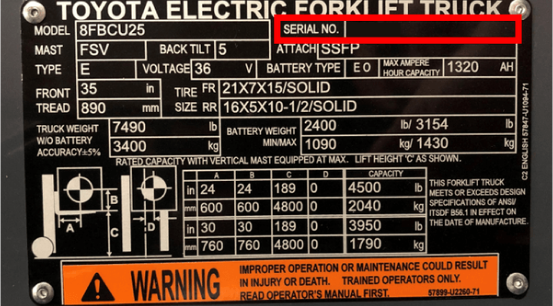Toyota’s THD Line Prepared for Increased Container Port Throughput

In 2017, Alphaliner increased its projections for global container port throughput to include volume growth of 6.4%. This was the result of 7.7% volume increase in the third quarter. These increased volumes are part of a larger global trend that is projected to continue. Throughout the U.S. and Canada, consumers are demanding products produced overseas at increased delivery velocity. Warehousing and distribution companies pass these demands onto shipping routes and ports, meaning we continue to see impact across the entire supply chain. Among these are the constructing of even larger containerships, as a 21,000 TEU ship is currently being planned and 24,000 TEU ships are being openly discussed in the port sector according to Maritime Logistics Professional. The current largest containership is 19,100 TEU.
While port managers have seen these increases coming, the ability to scale up appropriately and with the right equipment to handle increased container port throughput and volume is an escalating strain throughout the industry. Having examined the port industry closely, my Toyota colleagues and I work very hard to ensure we are on the cutting edge of shipping handling needs with the THD port line, including container handlers, a reach stacker, and various high-capacity pneumatic forklifts. We also recognize that the procurement of a big truck to meet port needs is a big financial investment. Here are a couple of questions you might ask yourself when preparing to make it.
Container Port Throughput
How Do I Scale Up To Meet My Volume?
Scaling up to meet high volume needs can be a challenge in any industry. But doing so in a port application can seem like an insurmountable problem, where the financial costs of new capital equipment make carefully considered decision-making a must. And the length of the procurement process for new equipment can leave some feeling stuck. You need a port equipment partner who can be responsive to your needs. Ask questions about the length of time it will take to get your equipment and compare that time to your needs. At Toyota, we make a low-lead time our goal, and you can have a new container handler, reach stacker, or high-capacity forklift to you in around 12-14 weeks.
How Do I Handle Breakdown?
When considering your port equipment options, it’s critical to remember that all material handling equipment requires maintenance. With the relatively small amount of trucks in demand across North America, manufacturing locations and servicing dealer locations should be considered. Why are those related? Because when your material handling equipment needs maintenance, a lengthy wait on part distribution can serious increase your downtime. Toyota’s THD port line parts are all locally sourced in North America, meaning we can help eliminate some of the risk associated with potentially lengthy downtime and protecting your ROI. Your equipment can also be serviced through out local Toyota dealer network. But whatever port equipment you choose, ask questions about the maintenance of the machine. Any time your equipment is down is time that equipment isn’t available to meet increased container port throughput.


